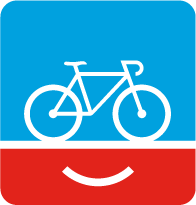Washington, DC prepares to double down on bicycling
By: David Cranor
The process of creating green lanes starts long before the construction crews show up, before the designs are presented to the public and before the engineers start their studies. It really starts in the unglamorous world of planning. Between 2009 and 2012 Washington has built four miles of protected bike lanes, and every one of them was originally included in the 2005 Bicycle Master Plan as either a separated bike facility or a bike lane. Now 8 years into that 10-year plan, Washington has started the process of planning again.
In the summer of 2011, Washington, DC Mayor Vincent Gray launched the Sustainable DC program to create a comprehensive Sustainability Strategy for the District. Over the next 21 months, the Office of Planning and the Department of the Environment set the framework for the District to become the most sustainable city in the country. Sustainability in this case isn’t just an environmental effort. It also includes elements like diversity; health and wellness; and jobs and the economy.
Naturally, a key element of this effort involves transportation and within that, goals to increase cycling’s mode share. The city recognizes that bicycling has the capability to improve health and wellness, improve the economy, reduce carbon emissions and improve air and water quality. And so, it has laid out a set of ambitious goals at various target dates.
In the short term, the Department of Transportation (DDOT) will play a key role. It will update the Bicycle Master Plan, which has already been overcome by rapidly evolving cycling innovations. The plan, for example, doesn’t mention bike sharing, even though, since it was completed, Capital Bikeshare has become the region’s most visible bicycling program. New developments in bicycle facilities like sharrows and bike boxes – both of which can be found in DC – would surely be included as well. DDOT will also lead a review of bicycle access to parks and open spaces to ensure that every neighborhood can easily access the natural environment. Finally, DDOT will lead an effort to improve data collection and analysis about cyclist travel in DC.
In the meantime, the District wants to partner with community groups to provide bicycle and pedestrian safety education to more motorists, pedestrians, cyclists, and public transit operators.
In the longer term, the goals are more specific. By 2032, the District wants to increase biking and walking to 25% of all commuter trips, up from 15% in 2011. To do this, the Washington wants to increase and improve current bicycle facilities. The plan set a goal to nearly double the bike lanes in the city from 56 miles to 100. It sets as a target adding an additional 200 Capital Bikeshare stations, the same number in the entire program right now, to Washington neighborhoods. Finally, DDOT will perform future traffic light timing reviews such that they consider the efficient movement not just of motorists, but also cyclists; expand the bicycle trail network and integrate it with trails in adjacent jurisdictions; and create formal signage for wayfinding and safety.
Looking beyond facilities and eductation, the District will also work with private businesses to reduce car commuting. One program idea is a “parking cash out” that offers cash to employees who pass on free employer provided parking. Another is to offer tax free bicycle purchases financed by the employer. Innovations off the street can do a great deal to improve the use of facilities on it.
Of course, this is just a plan and these are just goals. It takes sustained effort, over many years and multiple administrations for these to see fruition. But plans give advocates the leverage they need to make changes. Plans are where it all starts.

